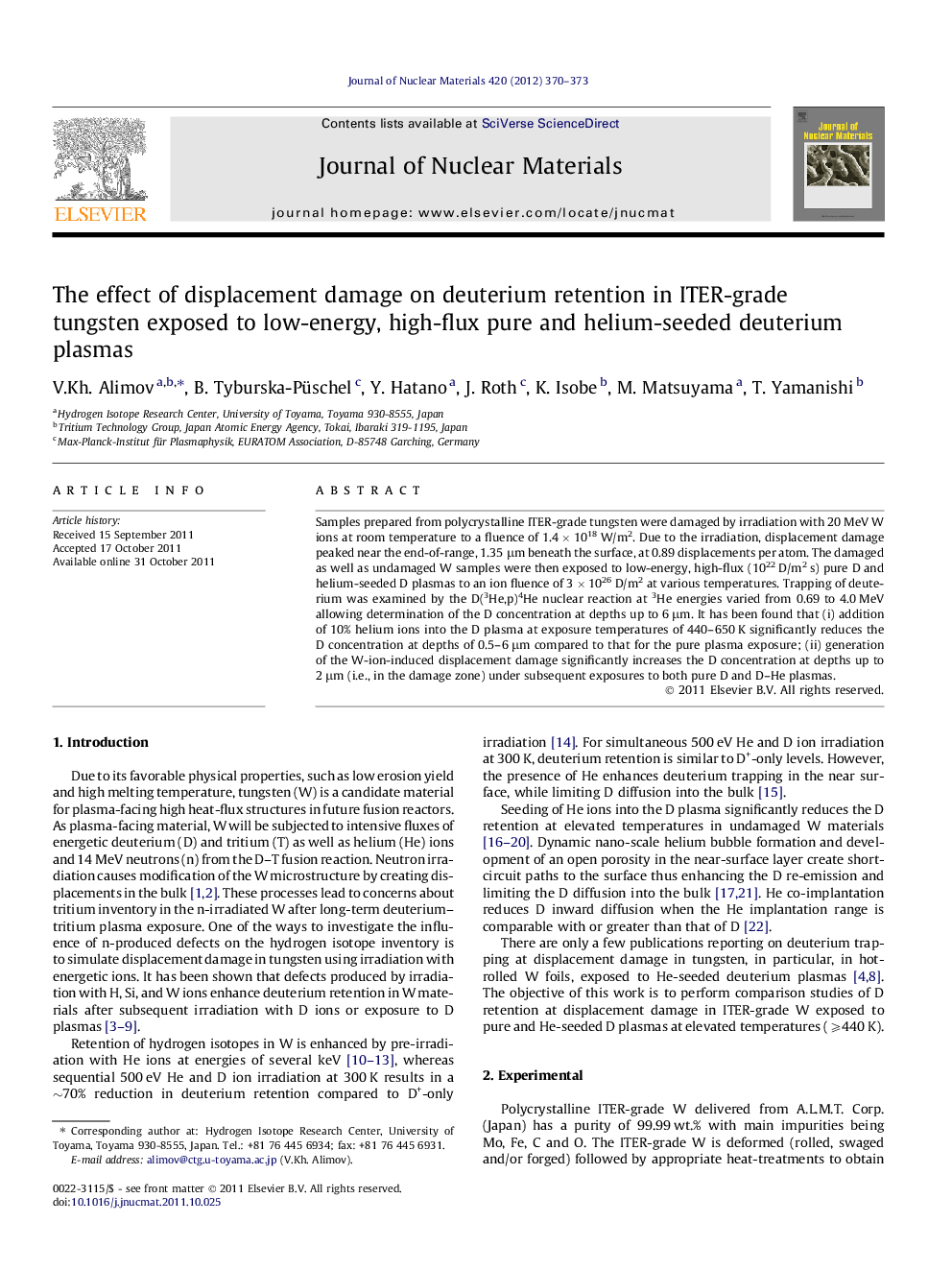| Article ID | Journal | Published Year | Pages | File Type |
|---|---|---|---|---|
| 1566481 | Journal of Nuclear Materials | 2012 | 4 Pages |
Samples prepared from polycrystalline ITER-grade tungsten were damaged by irradiation with 20 MeV W ions at room temperature to a fluence of 1.4 × 1018 W/m2. Due to the irradiation, displacement damage peaked near the end-of-range, 1.35 μm beneath the surface, at 0.89 displacements per atom. The damaged as well as undamaged W samples were then exposed to low-energy, high-flux (1022 D/m2 s) pure D and helium-seeded D plasmas to an ion fluence of 3 × 1026 D/m2 at various temperatures. Trapping of deuterium was examined by the D(3He,p)4He nuclear reaction at 3He energies varied from 0.69 to 4.0 MeV allowing determination of the D concentration at depths up to 6 μm. It has been found that (i) addition of 10% helium ions into the D plasma at exposure temperatures of 440–650 K significantly reduces the D concentration at depths of 0.5–6 μm compared to that for the pure plasma exposure; (ii) generation of the W-ion-induced displacement damage significantly increases the D concentration at depths up to 2 μm (i.e., in the damage zone) under subsequent exposures to both pure D and D–He plasmas.
► W samples were irradiated with 20 MeV W ions to 0.89 dpa at the damage peak. ► The W samples were exposed to pure D and He-seeded D plasmas. ► Displacement damage significantly increases the D concentration in the damage zone. ► After exposure to D plasma, the D concentration is higher than that after He–D plasma.
